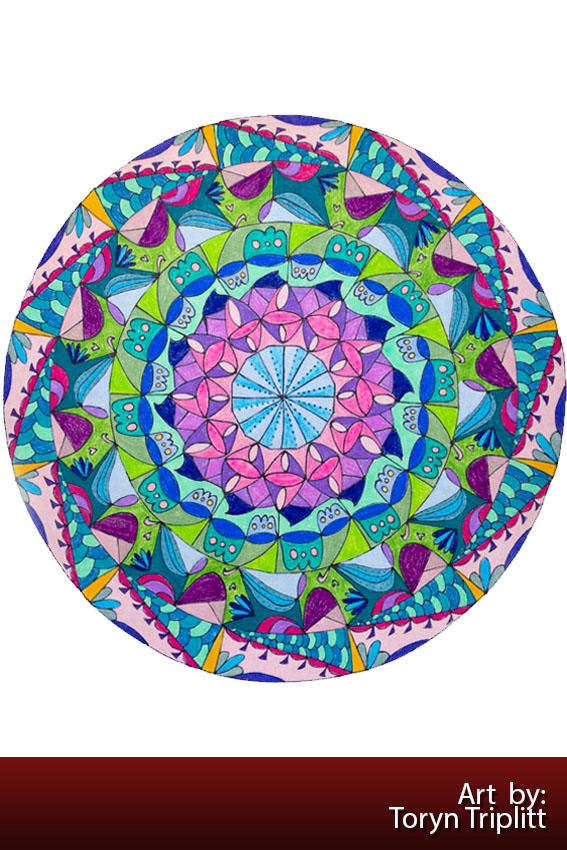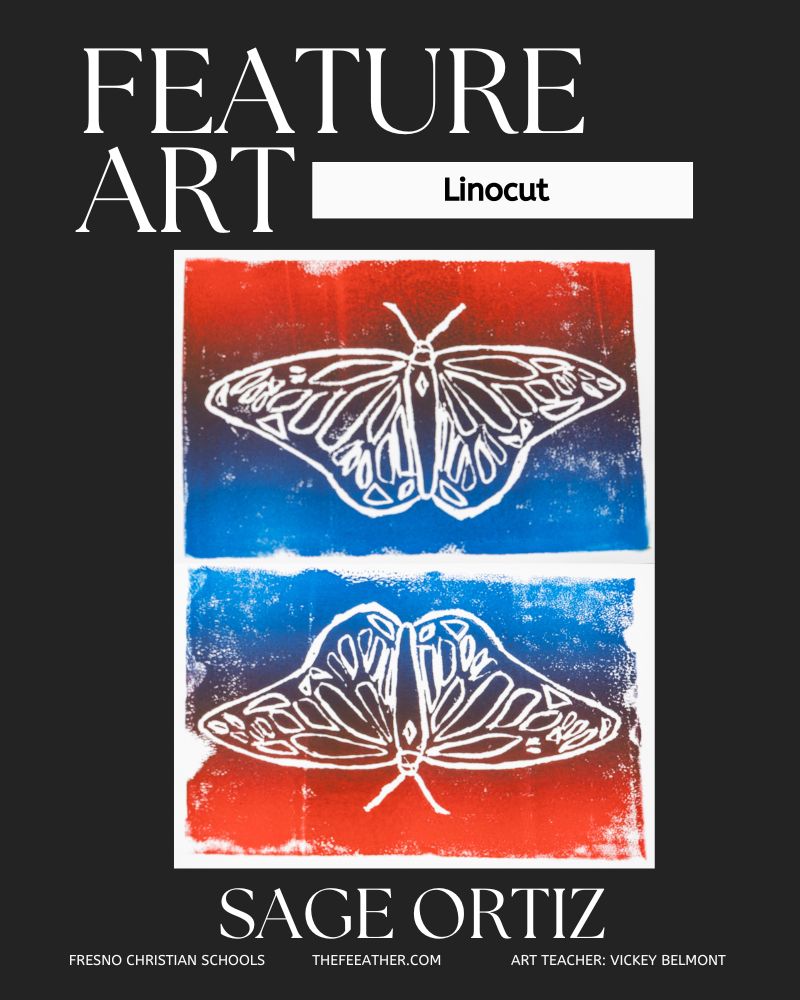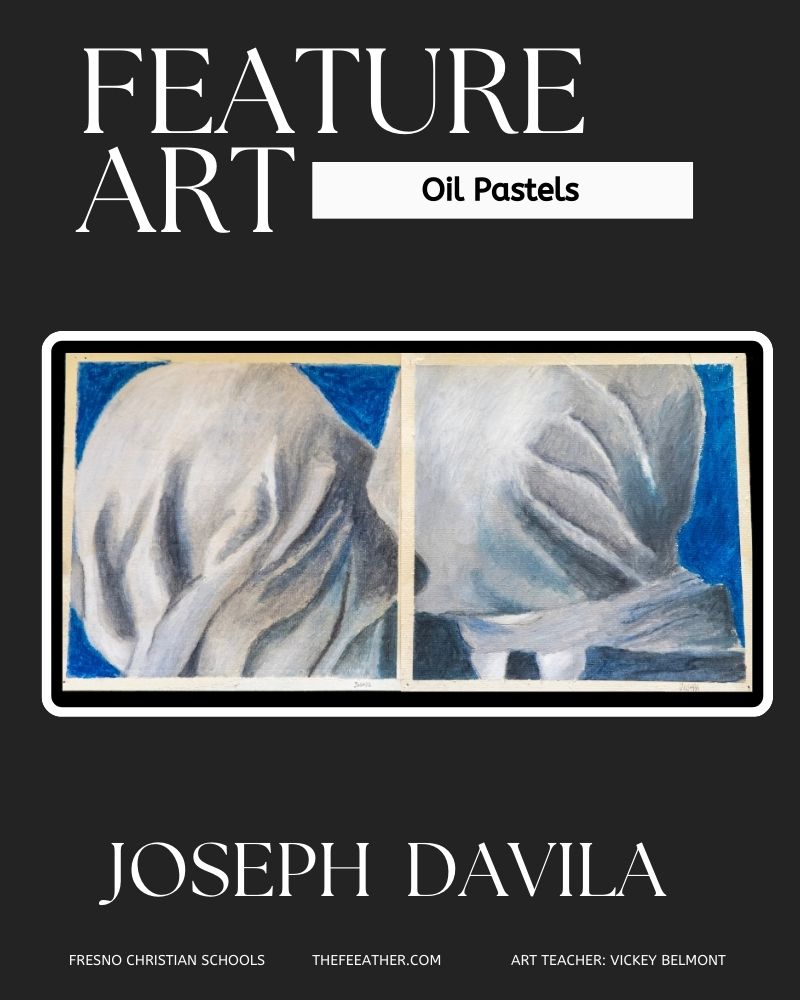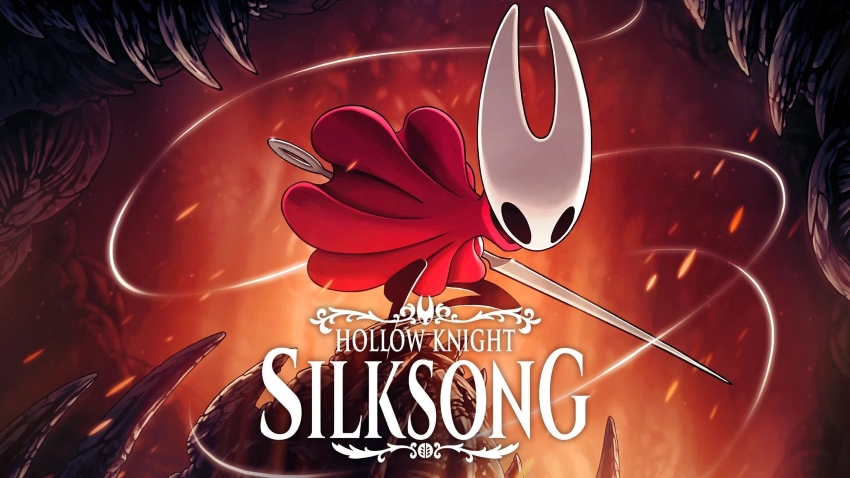The Feather Featured Art series is chosen by art teacher Vickey Belmont from her classes and/or independent art students. Belmont picks the best work during current units and encourages students to participate in these occasional posts. Other students are encouraged to submit art pieces as well. Please contact the editors directly or via adviser Greg Stobbe for submissions.
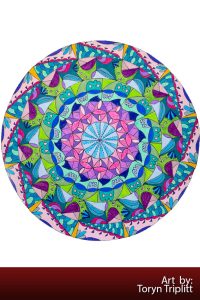
Description by art teacher Vickey Belmont: Toryn Triplitt, a senior and first-year art student finished her mandala beautifully. She fully comprehended the elements that this project used, her use of space, shapes and colors compliment each other in the repetitive pattern. This is an excellent example of how the mandala should look for this project.
At the beginning of the spring 2020 semester, I start my students on a project that requires them to repeat a pattern. It is a soft beginning to the semester and helps them come out of the fog of Christmas break.
The project I have them create is a mandala, which is a geometric configuration of symbols. Some people find the drawing and coloring of a mandala as a form of meditation. As they focus on coloring in the patterns of the form, they relax; their minds grow quiet, and they may enter into a meditative space. It is a good way to allow the creative process to begin.
Indimode Blogs have shared a great article about how to create and design a mandala.
Colors in mandalas have different meanings and can tell others a lot about the artist. Colors give off two different types of feelings; positive and negative emotions belong to each color. For example, orange is titled the “color of emotions” and can positively be recognized as energy or warmth. But the negatives can be depicted as warning or anger.
The students begin with a circle that has 12 pie shapes, writing their name, evenly spacing the letters; they work from the center out, placing their name in one pie. Using a compass, the students make concentric circles for each letter of their name.
When they have finished putting their name in each pie shape, their name creates a mandala unique to them. The empty space is filled with geometric shapes, dots, and twisty designs. Repeating the pattern in each area, color is added to finish their mandala.
In the following podcast, senior Toryn Triplitt interviews Vickey Belmont about the mandala project.
The students learn composition balance: circular design, composition contrast: shapes and color, repetition: pattern and line/shape stylizing. A balanced design is a perfect finish to a completed mandala.
Mandala by Toryn Triplitt
When we were given the initial assignment, I had a vague knowledge about what a mandala was. I knew I had seen them before, that they were colorful, and that was about it. I had no clue how to go about creating one.
In Art 1, our mandala project was a name mandala. So if you look very closely and carefully you can find that the letters of my first name make up the core design in each of the different rings, starting in the center and spelling my name outwards.
I have always loved art and being given a project where I was able to be completely creative in my drawing and choice of colors really provided a relaxing few class periods as I completed the project.
I chose the colors that I did based off of one of my favorite seasons, spring. I love springtime because of all the colors popping up, the flowers are blooming, and the grass growing so tall and green. I stuck with using mostly pinks, blues, greens and purples, but using a few other colors to separate them from looking too repetitive.
The most challenging thing about creating the mandala was doing all the doodling and design inside in sharpie. I am not the biggest fan of tracing over pencil lines so I decided to just use a sharpie to create my designs. Occasionally I would make a mark that I did not like, but I have to keep it consistent in all the corresponding spaces, so I would just have to make it work. But I was very happy with the completed project.
For the previous art post, read Feature art No. 5, 2019-20 — Drawing unit: Portraits. For an article from the news section, read SPLC presents third annual Student Press Freedom Day, Jan. 29.

